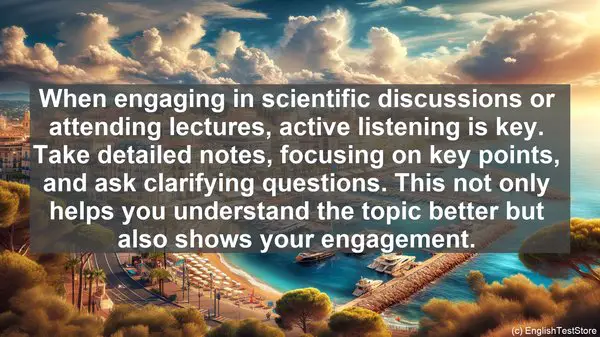Introduction
As students in the fields of science, technology, and research, it’s crucial to communicate our ideas effectively. In this video, I’ll be sharing 10 advanced English communication methods that will help you excel in your academic and professional pursuits. Let’s dive in!
1. Mastering Technical Vocabulary
In the world of science and technology, precise terminology is essential. By immersing yourself in technical literature and participating in discussions, you can expand your vocabulary and confidently express complex ideas.
2. Utilizing Visual Aids
Visual aids, such as graphs, charts, and diagrams, can enhance your presentations and make complex data more accessible. They serve as a universal language, ensuring your message is understood, regardless of language barriers.
3. Active Listening and Note-Taking
When engaging in scientific discussions or attending lectures, active listening is key. Take detailed notes, focusing on key points, and ask clarifying questions. This not only helps you understand the topic better but also shows your engagement.
4. Structuring Your Writing
Whether it’s a research paper or a project proposal, a well-structured document is crucial. Use clear headings, subheadings, and paragraphs to organize your thoughts. This not only improves readability but also showcases your logical thinking.
5. The Art of Summarizing
In the fast-paced world of academia, concise summaries are often required. Practice the art of summarizing complex concepts into a few sentences. This skill is invaluable when writing abstracts or giving brief presentations.

6. Collaborative Communication
In research and industry, teamwork is common. Effective communication within a team involves active participation, sharing ideas, and providing constructive feedback. It’s about creating a synergy that leads to better outcomes.
7. Polishing Presentation Skills
Presentations are a common way of sharing research findings. Work on your delivery, body language, and slide design. Engage your audience, and be prepared to answer questions confidently.
8. Cultural Sensitivity
In the global scientific community, cultural diversity is prevalent. Be aware of cultural nuances, such as communication styles and etiquette. Respect for different perspectives fosters collaboration and understanding.
9. Embracing Technology Tools
From video conferencing to collaborative editing platforms, technology offers numerous communication tools. Stay updated with the latest software and apps that can streamline your communication processes.

10. Continuous Improvement
Finally, effective communication is a skill that can always be honed. Seek feedback, attend workshops, and read up on communication strategies. With dedication and practice, you can become a master communicator.
